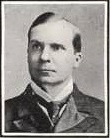1889–1899




| Civic year | Chairman | Vice chairman | Deputy chairman |
|---|---|---|---|
| 1889 [5] | Earl of Rosebery | Sir John Lubbock | Joseph Firth Bottomley Firth (Died September 1889) Office vacant September – November 1889 |
| 1889–1890 [6] | Earl of Rosebery [note a] Sir John Lubbock (July 1890) [7] | Sir John Lubbock [note a] | Alfred H Haggis |
| 1890–1891 [8] | Sir John Lubbock | Thomas Farrer | Alfred Haggis (Died November 1891) Office vacant November 1891 – March 1892 |
| 1891–1892 [note b] | |||
| 1892–1893 [9] | Earl of Rosebery [note c] John Hutton (July 1892) [10] | John Hutton [note c] Charles Harrison (July 1892) [11] | Willoughby Dickinson |
| 1893–1894 | John Hutton | Charles Harrison | Willoughby Dickinson |
| 1894–1895 | Sir John Hutton [note d] | Charles Harrison | Willoughby Dickinson |
| 1895–1896 [12] | Sir Arthur Arnold | John Benn | Willoughby Dickinson |
| 1896–1897 [13] | Sir Arthur Arnold | Dr William Job Collins | Melvill Beachcroft |
| 1897–1898 [14] | Dr William Job Collins | Melvill Beachcroft | Andrew Mitchell Torrance |
| 1898–1899 [15] | Thomas McKinnon Wood | Lord Welby | Henry Percy Harris |
- Note a: ^ ^ The Earl of Rosebery resigned, and the vice chairman, Sir John Lubbock was elected in his place in July 1890. The vice chairmanship then became vacant, being eventually filled by Sir Thomas Farrer.
- Note b: ^ The three office holders all made clear their intention to resign at the end of October 1891. However, following unanimous representations from the members of the council, all agreed to continue until the next elections in March 1892. Therefore, no elections to the offices were made in 1891. [16]
- Note c: ^ ^ Rosebery resigned as chairman in the Summer of 1892, becoming Foreign Secretary in the Fourth Gladstone Ministry. Hutton was elected chairman and Harrison replaced him as Vice Chairman.
- Note d: ^ Knighted in 1894. [17]









